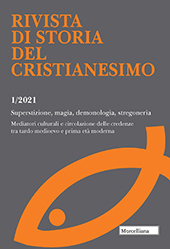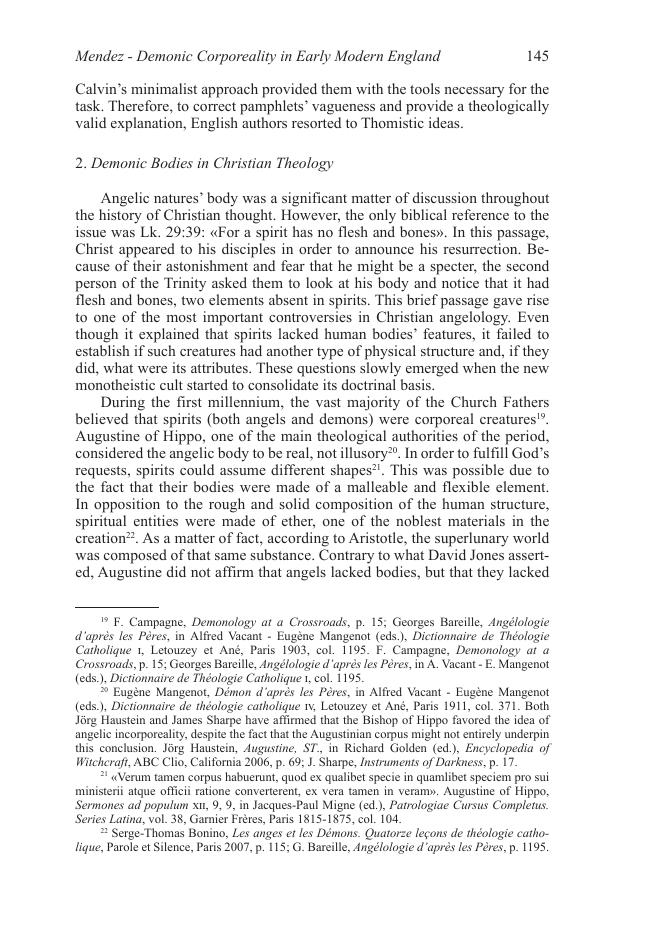Rivista di storia del cristianesimo : 18, 1, 2021
[Superstizione, magia, demonologia, stregoneria : mediatori culturali e circolazione delle credenze tra tardo medioevo e prima età moderna]
P. 1-286
In the grimoire attributed to the famous linguist Sirāj al-Dīn Sakkākī (d. 1160), the Kitāb al-shāmil wa baḥr al-kāmil, a very interesting section revolves around a magical procedure involving a bowl and a young boy. According to the instructions transmitted by its author, the young boy must be pre-pubescent, and after drinking from the liquid inside the bowl, he will be able to obtain foretelling abilities through the medium of the jinn. This practice was already acknowledged in the Ancient and Late-Antique World as crystal gazing or crystallomancy, and among different modalities, involved also hydromancy, or the use of a vessel filled with liquid that served as a screen in which to scry. This technique was derived, as the ancient writers relate, from the Ancient Near East. Indeed, this procedure displays obvious reminiscences with a commonplace of the literature and the practice of the Ancient, Late-Antique and Middle Age World: the function of the young cupbearer.
This function, essential in the context of the courts, and widely addressed in religious literature as an esoteric metaphor, shows a definite connection with the ancient mythology of the Divine Cupbearer. [Publisher's text]
-
Artículos del mismo número (disponibles individualmente)



